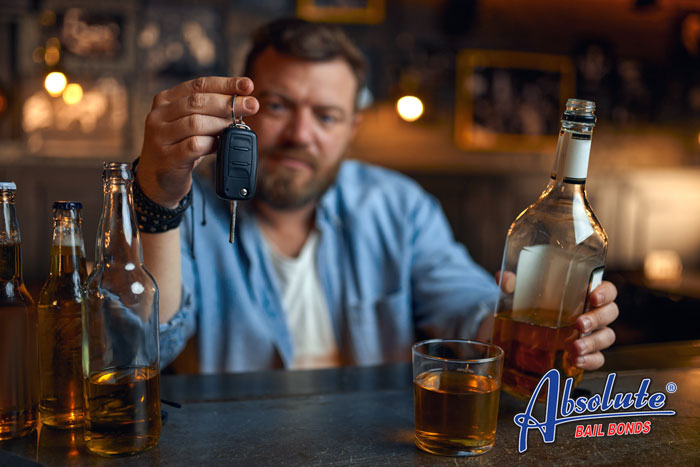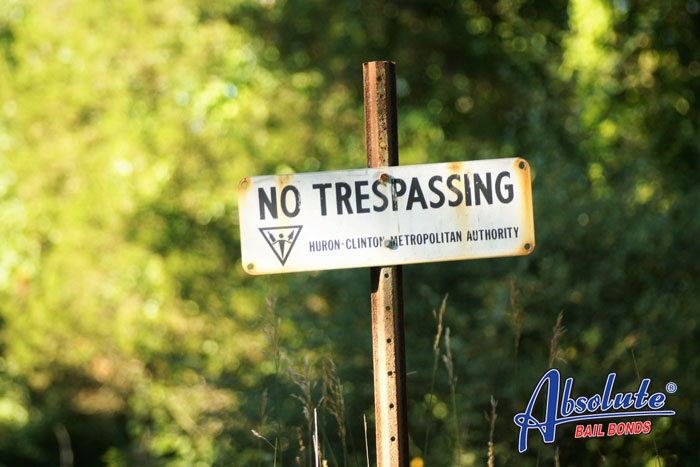
Are DUI Sobriety Checkpoints Legal in California?
No one likes DUI checkpoints. Not only do they make many of us nervous, even when we haven’t been drinking. There’s just something about getting caught in a checkpoint and seeing a police officer walking towards us that tends to activate a guilt complex, they also drastically extend the length of time it takes you to get from Point A to Point B.
As irritated as you might be that you were caught at a DUI checkpoint, you shouldn’t expect the state to stop using them anytime soon. The purpose of the checkpoints is to reduce the annual number of deaths and injuries that are the direct result of drunk driving incidents. As long as the checkpoints continue to catch drunk drivers, they will remain an issue you’ll have to deal with when driving in California.
Many people have protested that DUI checkpoints are illegal, that they’re a form of entrapment. The issue has even made it all the way to both the California and Federal Supreme Courts, who ruled that the checkpoints were legal. There are some rules that they must follow when the highway patrol sets up a California DUI checkpoint. These rules include:
- Arranging things so only the supervising officers are in charge of operational decisions;
- Establishing a completely neutral criteria for drawing motorists into the checkpoint.
- Making sure the checkpoint is set up in a location where the supervising officers can reasonably expect drunk drivers to pass-through
- The checkpoint is safe and all safety protocol is being followed
- The is sufficient evidence that the checkpoint will catch some drunk drivers
- That the checkpoint is organized in such a way that each person is detained for as short a period of time as possible
- Roadblocks are used to publicly announce the presence of DUI checkpoint
If you’ve never been caught at a California DUI checkpoint, it can be a bit overwhelming. The good news is that the checkpoint should be set up in such a way that it’s easy for you to grasp what you’re supposed to do.
When set up correctly, roadblocks are used so that vehicles slowly merge together before coming to a complete stop. One of the officers will approach your car and request the same material that they ask for during a routine traffic stop: driver’s license, proof of insurance, registration. What is a little different is that the officer will be intent on your behavior and will likely spend a little time chatting with you. They really aren’t interested in what you have to say, but rather how you say it and your overall behavior. They’re using the few moments of conversation to decide if you’ve been drinking.
Indicators the officer uses to decide if they should do a full sobriety test include:
- Fumbling
- The smell of alcohol
- Lack of focus
- Slurred speech
- Watery eyes
- Jittery behavior
- Shaking hands
The other thing the officer will do is a quick scan of the interior of your car. They’re looking for things like open containers, drug paraphernalia, and other signs that you were drinking (or consuming drugs) before and/or while you’re driving. The entire experience usually lasts about 30 seconds.
As a rule, the officers usually ignore passengers while they’re questioning the driver. This could change if the passenger acts like they are intoxicated. During a checkpoint, the officers do have the right to question anyone who is in the car, if they feel that the passenger represents a safety hazard to themselves, or the driver, the officer will have to decide how they should proceed. If there’s evidence that the passenger is under the influence of illegal drugs, they may decide to arrest the passenger. If you’re the passenger during a DUI checkpoint, it’s in your best interest to stay quiet.

Absolute Bail Bonds Makes Your Life Easier After An Arrest
When you get that phone call from a loved one inside jail telling you they need help to meet bail, your heart sinks, your temper rises, and your stress elevates. Where do you start to get this money to pay for bail? Simply call Absolute Bail Bonds in Long Beach.
Absolute Bail Bonds specializes in writing up a bail bond to get people out of jail. On top of that, the company is consistent in meeting and exceeding client expectations of not just doing the job, but doing it with compassion and eagerness. We truly care about our clients, and making their life easier after an arrest.
It doesn’t matter if it’s the middle of the night, the middle of the day, or the middle of a Federal holiday, we’re here and ready to post a bail bond for you!
Let us help you rescue your loved one from jail without requiring you to empty your bank account. We work with all of our clients to create individualized payment plans that are designed to work with your unique situation. This way, you can break up the already smaller cost of the bail bond, into affordable & flexible monthly payments.
Give us a call at 1-800-793-2245 to get the bail bonds process started today.

What Happens if You Hurt Someone in a Drunk Driving Accident?
Driving while drunk isn’t just frowned upon in California, it’s illegal. While you’re allowed to go out and have a good time, if that good time involves drinking alcohol, you need to pay careful attention to how much you consume. As soon as your blood alcohol level reaches 0.08%, you’re no longer legally allowed to drive.
What Happens if You Get Caught Drunk Driving in California?
Don’t assume that just because you’ve never had a drunk driving offense that you have nothing to worry about the first time you’re charged with drunk driving in California. Even though it’s your first offense, it’s still going to have a massive impact on your immediate future.
First the fines. California law is written in such a way that in addition to being required to pay anywhere from $390-$1,000 in fines, you can also pay something that’s called penalty assessments.
Once you’re convicted of first-time drunk driving the judge has the option of sentencing you to jail time. This is in addition to the fines. While there’s no mandatory jail time for a first-time drunk driving conviction, the judge could decide that you need to spend 48 hours to 6 months in jail.
Plan on losing your driving privileges. As soon as you’ve been officially convicted of your first DUI, your license will be suspended for six months. If you refused to submit to a bloc alcohol concentration test, an administrative license suspension could also be enforced which would mean losing your license for a full year.
What Happens if Someone is Injured Because you Were Driving Drunk in California
There’s no way of getting around the fact that if you injure someone while you’re driving drunk, you’ll face far more serious consequences for your actions than if you’re simply pulled over. How severe those additional consequences depends on several different factors including:
- If you have a previous history of DUI
- How severely injured the victim is
- Additional circumstances surrounding the incident
In California, DUIs that involve injuries are treated as wobblers, meaning they can be handled as either a misdemeanor or a felony. If the circumstances surrounding the incident indicate that your case is a felony, you could be sentenced to up to four years in prison and be required to pay a maximum fine of $5,000.
In addition to facing criminal charges, you’ll also likely be named the defendant in a civil case. During the civil case, your victim will seek financial compensation for both their medical expenses and their emotional/physical pain and suffering.
Considering the negative impact a DUI has on your life, it’s in your best interest to always have a designated driver whenever you go out and drink.

Consequences Of Aggravated Trespass in California
Most people don’t know that there’s such a thing as aggravated trespass in California until they see it’s one of the criminal charges they’re facing. Aggravated felony trespass is addressed in Penal Code 601 PC. The fact that you’re facing an aggravated trespass charge indicates the police have gathered evidence that suggests you threatened to physically injure someone and used the threat to gain entrance to their home/workplace/etc. without them granting permission. It should come as no surprise to learn that aggravated trespass is far more serious than a standard trespassing charge.
It’s important to note that sometimes the threat of physical harm and the actual trespassing act don’t always have to happen at the same time for a charge of aggravated trespassing to be filed against you. If you have threatened violence within 30 days of the trespassing act, aggravated will be added to the charges. An example of this is threatening to attack an ex and then having a knife/hammer/bat/gun on hand when you unlawfully trespass on your ex’s property a week later.
Given how serious aggravated trespassing sounds, many people are surprised to learn that it is one of California’s wobbler offenses. That means it can be handled as a misdemeanor or a felony. Generally, the exact circumstances of the threat and the accused’s conduct while they were trespassing determines if they face misdemeanor or felony charges.
A person convicted of misdemeanor aggravated trespass could be sentenced to as much as one year in a county jail and/or misdemeanor probation. For a felony conviction, the maximum sentence is three years in a county jail and/or felony probation. It’s worth noting that the felony conviction could negatively impact your right to own a gun in California.
While an aggravated trespassing charge seems grim, some defenses can be effectively used.
The first defense is that the accused owns the property or works on the property where they allegedly trespassed. It’s impossible to trespass on a property that’s legally your own. The law about trespassing/ownership/property rights does get confused if the property is being leased by someone else.
Another defense that’s been successfully used in aggravated trespassing cases is that no credible threat was made. In these cases, the burden of proof rests on the prosecution’s shoulders. If they can’t prove that there was a credible threat, the charges will be reduced to standard trespassing.
There is a time limit connected to aggravated trespassing charges. California law dictates that the threat and the trespassing act must happen within 30 days of each other.

Laws About Hitting a Pedestrian in California
California has a reputation as being a great place for pedestrians. The weather makes it possible for pedestrians to walk year-round and the state has done a wonderful job of creating places where pedestrians can stroll without encountering traffic. While pedestrians are invited to enjoy the benefits of walking, it’s important to understand that if you decide to stroll, there’s a chance you could be hit by a car. It’s equally important to understand that the odds of you having a pedestrian-car incident have increased in recent years.
Studies indicate that life for pedestrians is becoming increasingly dangerous. The Governors Highway Safety Association recently gathered data that indicated that the number of pedestrian deaths in the United States increased by 35 percent between 2009 and 2017. According to Triple-A, things are getting worse. The organization reported that from 2010 to 2019 pedestrian deaths increased by 46%.
It doesn’t appear that there is one particular reason pedestrian deaths have risen so much. Some feel that the fact that drivers are getting older could play a role. Another issue is the fact that drivers continue to ignore warnings about using cell phones while driving. It’s worth noting that not all pedestrian/car incidents that involve phones aren’t because the driver was using their phone. In 2010, an estimated 78,000 pedestrian injuries were the direct result of the pedestrian using their phone and not paying attention to their surroundings.
If you drive in California, you have a responsibility to look out for pedestrians. It’s an aspect of being a good defensive driver. Since California has a reputation for being such a great pedestrian state, you must assume that you’ll see a few people walking whenever you drive.
When you do see people walking, automatically check how you’re driving. The last thing you need is to be accused of reckless driving that resulted in you striking a pedestrian. It doesn’t matter if you fail to yield, are speeding, or are distracted, if you strike a pedestrian with your vehicle and there’s proof that you’re at fault, you could face steep fines, jail time, and civil lawsuits.
When you see a pedestrian walking, particularly if they are using their phone, give them as wide a berth as possible. Don’t automatically assume that they will stop at crosswalks, pay attention to no crossing signs, or that they won’t suddenly veer off the sidewalk.

We’re Quick, Right To The Point
We don’t want to waste your time (we know it’s precious and there’s no time to waste) so we’re going to get right to the point.
Here at Absolute Bail Bonds in Los Angeles, we offer:
- Customizable, low monthly rate payment plans.
- 24/7 availability.
- No hidden fees.
- Convenient and secure online payment system.
- Cash, credit, debit, and checks are accepted.
- Discounts for qualifying individuals.
- Licensed and experienced bail bond agents.
- Friendly, hardworking, understanding bail bond agents.
- Confidentiality.
- Phone approvals; if a face-to-face meeting is necessary, our agents go to you.
See how quickly we laid out what we can do for you? Error-free speed is our thing – we work very fast (and don’t worry we don’t cut corners either) to get people bailed out of jail, and our process, efficiency, and reliability won’t be any different for you and your loved one.
Contact someone at Absolute Bail Bonds in Los Angeles by opening a chat room online with us, or by calling us at (800)793-2245. We absolutely won’t let you down!

Down Powerline Safety tips
There are a variety of ways a power line can come down including severe winds, natural disasters, and even an auto accident. The reason the power line is down isn’t important. The important part is knowing how to stay safe when you find a downed power line.
Don’t assume that just because the downed power line isn’t sparking or because it’s coated with rubber that it’s safe. When it comes to power lines, always act like it’s a live wire and that touching it will result in a fatal shock. Power lines aren’t something you should ever take a chance on.
As soon as you spot the downed power line, you need to change the way you move. Instead of lifting your feet when you walk, start shuffling. Keeping your feet, especially if you’re wearing rubber-soled shoes, on the floor increases the odds of your remaining grounded and safe from the electricity.
Most people assume that the damaged power line is the only dangerous thing. It’s not. When a power line goes down, the electricity actually fans out, which means that anything in the area could potentially deliver a deadly shock. Stay at least 100 feet, the length of two semi-truck trailers, away from the line and don’t touch a single thing. The further you are from the line, the safer you are.
As long as you are safe, remain in the area. Your responsibility while you wait for the proper authorities to arrive is to warn anyone who approaches of the danger and prevent them from coming into contact with any stray voltage.

Staying Safe While Online Dating
It doesn’t look like online dating is going anywhere.
This is often the time of year when people start to think about online dating. Some do this because they think the start of a new year is the perfect time to start a new relationship. Others because they realize that Valentine’s Day is right around the corner. Others decide that it’s a great time to create a new online dating profile because they hated being single during the holidays.
Whether you’re an online dating veteran or you’re just dipping your toe into the world of online dating, it’s always a good time to review safe online dating practices.
The first thing to remember is that you don’t really have any idea about who you’re talking to. Online dating is a great way to meet people, but it’s also a format that attracts a lot of predators. Choose a dating site that is upfront about its policy for keeping everyone involved safe.
If you make a match, take some time to get to know the person online before you arrange an in-person meeting. Whenever possible try to keep the conversation going through whatever means the online dating site has provided. This makes it easier to report any abuse or suspicious behavior.
Do not meet in a private or secluded area. Arrange to meet in a public place. Before going on your first date, let people know where you are going, who you are going with, and arrange for a time that you’ll check in with them and let them know that you’re okay.
Do not tell the person you’ve connected with online where you live. Make sure you eliminate any geographically identifiable items (such as your house) from the pictures you post on your profile.
If you start to feel at all uncomfortable with the other person, be it while you’re chatting on the dating site or while you’re on a real-time date with your online match, sever the connection and move on. Your safety and mental health are far more important than the few minutes of embarrassment you’ll feel while dashing away from the date.
Do not invite your online love connection to your home until you’re one hundred percent positive that they’re a good person and someone you can trust. If you have any reservations at all, keep the dates to public places. The same is true about getting into a car with them. It doesn’t matter if you’re driving or they’re driving, always travel in separate vehicles until you are confident about who you are with.
The most important thing to remember when you’re dating online is to trust your instincts. You really do know best so if something feels a little funny or unsafe it’s in your best interest to block that person and search for the next promising candidate.

Drug Trafficking in California
Drug trafficking is a concern throughout the United States. It’s particularly concerning to California lawmakers who are aware that the state’s relatively close location to both Canada and Mexico, as well as the massive number of ports the state has made it a popular choice for drug traffickers who want to either import or export drugs.
The issue of drug trafficking is discussed in California’s Health and Safety Code 11352. It states that:
“Except as otherwise provided in this division, every person who transports, imports into this state, sells, furnishes, administers, or gives away, or offers to transport, import into this state, sell, furnish, administer, or give away, or attempts to import into this state or transport (1) any controlled substance specified in subdivision (b), (c), or (e), or paragraph (1) of subdivision (f) of Section 11054, specified in paragraph (14), (15), or (20) of subdivision (d) of Section 11054, or specified in subdivision (b) or (c) of Section 11055, or specified in subdivision (h) of Section 11056, or (2) any controlled substance classified in Schedule III, IV, or V which is a narcotic drug, unless upon the written prescription of a physician, dentist, podiatrist, or veterinarian licensed to practice in this state, shall be punished.”
If you’re charged with drug trafficking the potential consequences connected to a conviction are frightening. The judge has the option of sentencing you to 3-9 years for your first offense. You could also be hit with a $20,000 fine and be ordered to serve felony probation.
It’s important to note that you could be charged with drug trafficking even if you never make a single penny off the deal. Simply moving the drugs or giving them a friend can result in legal action.
The list of drugs you’re not legally allowed to transport in California includes, but isn’t limited to:
- Cocaine
- Peyote
- Opiates
- Heroin
- LSD
- Multiple types of prescription drugs
Most people who are hit with drug trafficking charges also find that they are charged with other crimes. Crimes commonly connected to drug trafficking include drug dealing, selling controlled substances to minors, having drugs near a controlled facility or government building, illegal distribution, prescription fraud, and more.
There are very few legal defenses that can be successfully used in drug trafficking cases. The only thing the prosecution has to prove is that not only were you moving the controlled substances from one location to another but that you were also aware that the drugs were controlled substances.


